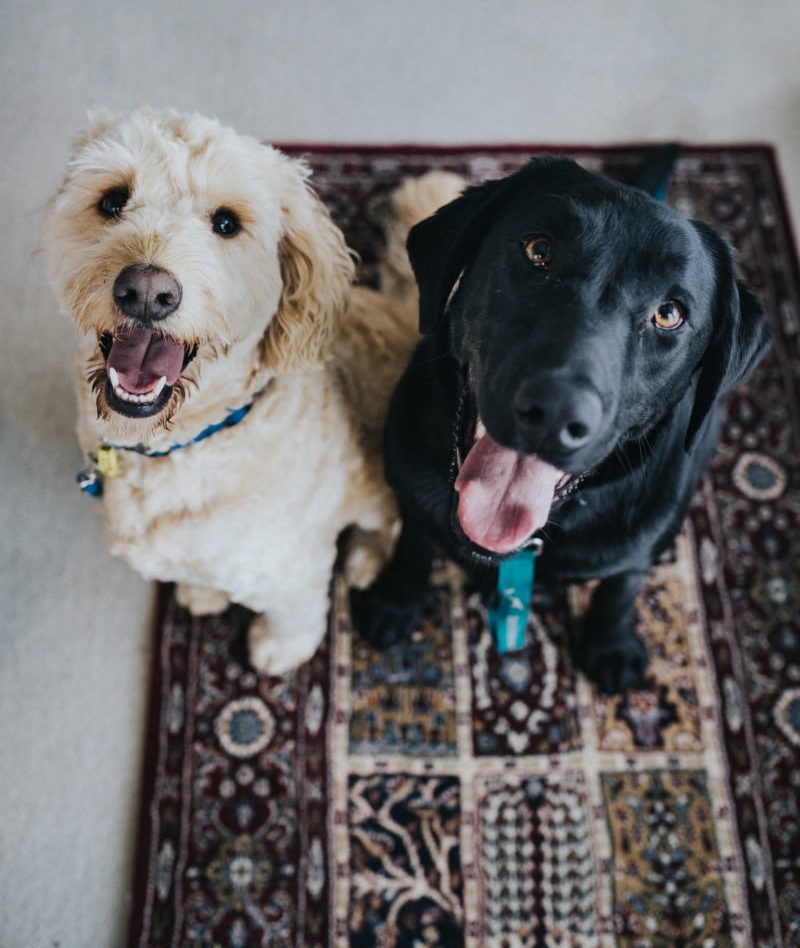I’d been watching a Doberman mix on the SPCA website for a couple of months and talking with the staff about his needs and issues. April 1st I adopted ‘Lucas’ with the intention to work with him and then rehome him this summer because his issues, as they were described, were preventing him from finding a forever home.
Lucas is a 1 yr. old who, as it turns out, is great with the other dogs we’ve met and with people but his 2 big issues that I’m dealing with are jumping up and heavy mouthing that includes biting down hard but not puncturing. Together we are working on this long reinforced behaviour that should have been dealt with much earlier in his life.
When you bring a newly adopted dog into your home, one that isn’t a baby puppy, its important to take is slow in order to get to know your dog. What is equally important is allowing the dog to assimilate to his or her new environment and that includes YOU and all the other members of the family.
For Lucas that meant no walks for the first 7 days and access to my yard on a 13’ training line. The first street walk was just 100 yards to explore our street on day 7. We didn’t want to put any pressure on him either so we asked very little other than to wait for permission to eat. I felt we needed to start setting boundaries early due to the behaviour he was exhibiting: jumping and biting.
In some cases, dogs that are rehomed are coming from a chaotic life circumstance. They may be coming from a rough life into a noisy shelter or if they’re lucky, they are placed in a foster home but either way, they are experiencing a new environment; stability and continuity no longer exists.
Remember that dogs don’t know what’s coming from one day to the next so routine is very helpful but for dogs in rehoming situations, immediate routine goes a long way to help a dog feel safe in their new home. And dogs, like us, want to feel safe so going slow and allowing time to adapt is key in those early weeks of adoption.
Often people are so excited about this new addition they go a little to fast but with good intention. They have visitors over or take the dog out into new environments without really knowing how they’re dog will react. If you think about it from the dog’s perspective, coming into your home, no matter how calm it is, is a huge adjustment and your dog needs time to learn about his new surroundings and the new routine; theirs AND yours. And more importantly, your dog needs to build trust in you and you in him or her. This takes time!
Having just been through this with Lucas, I have a few pieces of advice for new adaptors:
Go slow and take your time: Regardless of the history, much is unknown. Take your time and this will help your dog.
Allow your dog to rest; allot: Dogs coming out of the rehoming ‘system’ need rest and lots of it. Rest heals the body and calms the mind. Chances are your new dog has been producing cortisol in unhealthy amounts and this can have an affect on your dog’s brain and organs. For some, rest doesn’t come easy so provide a calm home without pressure. Deep REM sleep is vital to healing and helping the brain receive new information aka: adapting to life changes and training.
Don’t go anywhere with your dog for at least 7 days: That includes no visitors, no dog parks, no trips etc. This allows your dog time to adjust to her /his new home, the new routine including food and potty habits and allows them time to process small amounts of change which is your home and all the humans in it.
Do not ask too much of your dog too soon: Do not ask for lots of sits and downs but concentrate on giving your dog the opportunity to rest and feel secure. Don’t fawn all over your new dog either. Setting boundaries includes you too so allow your dog to engage voluntarily. Small boundary setting is fine but don’t put pressure on the dog with heavy training as there is plenty of time for that later.
Often people want to spoil an ‘abused rescue’ by allowing them liberties which may or may not be taken away down the road. This is a mistake. Your dog needs boundaries not pity. Boundaries build trust and pity can create more fear.
Provide the guidance your dog needs and help him or her feel secure and safe. That is your priority in the first weeks of a new adoption.

